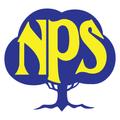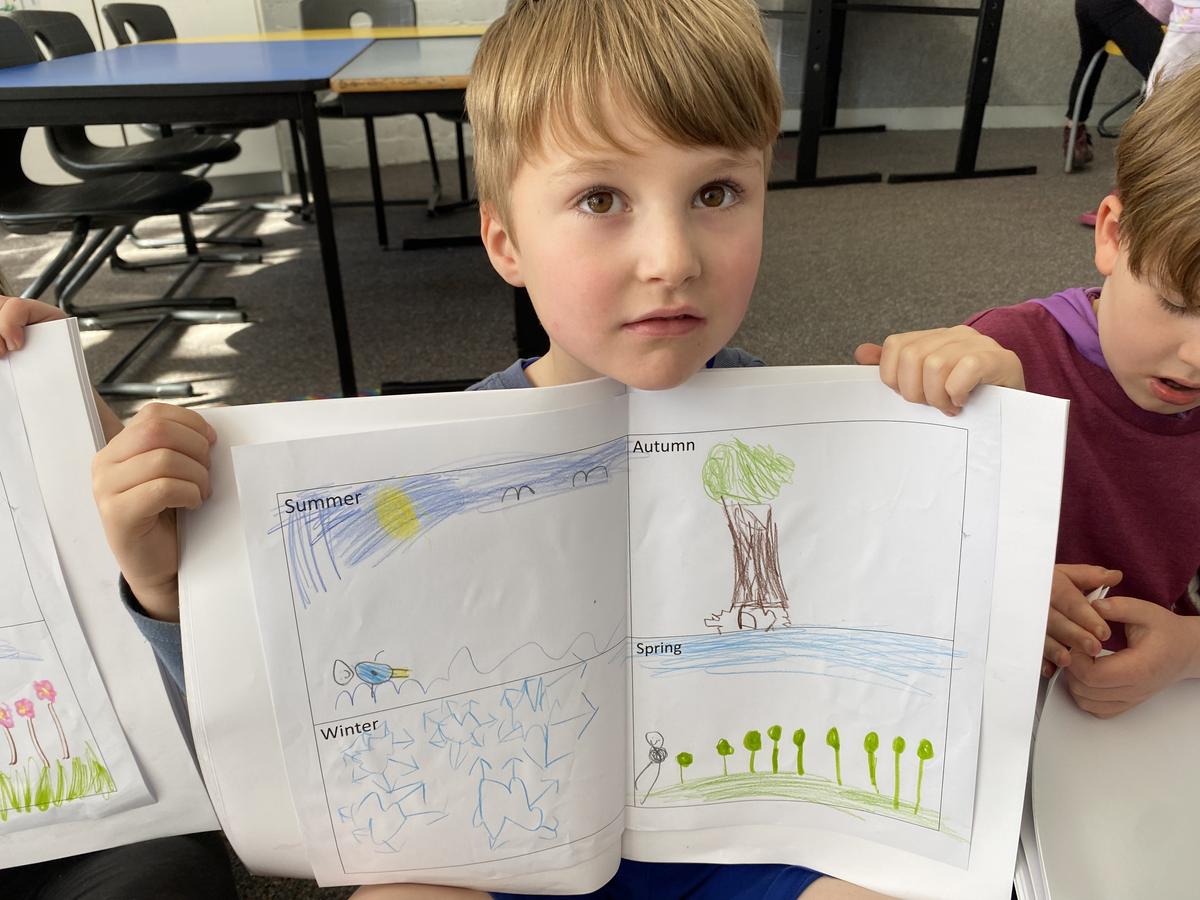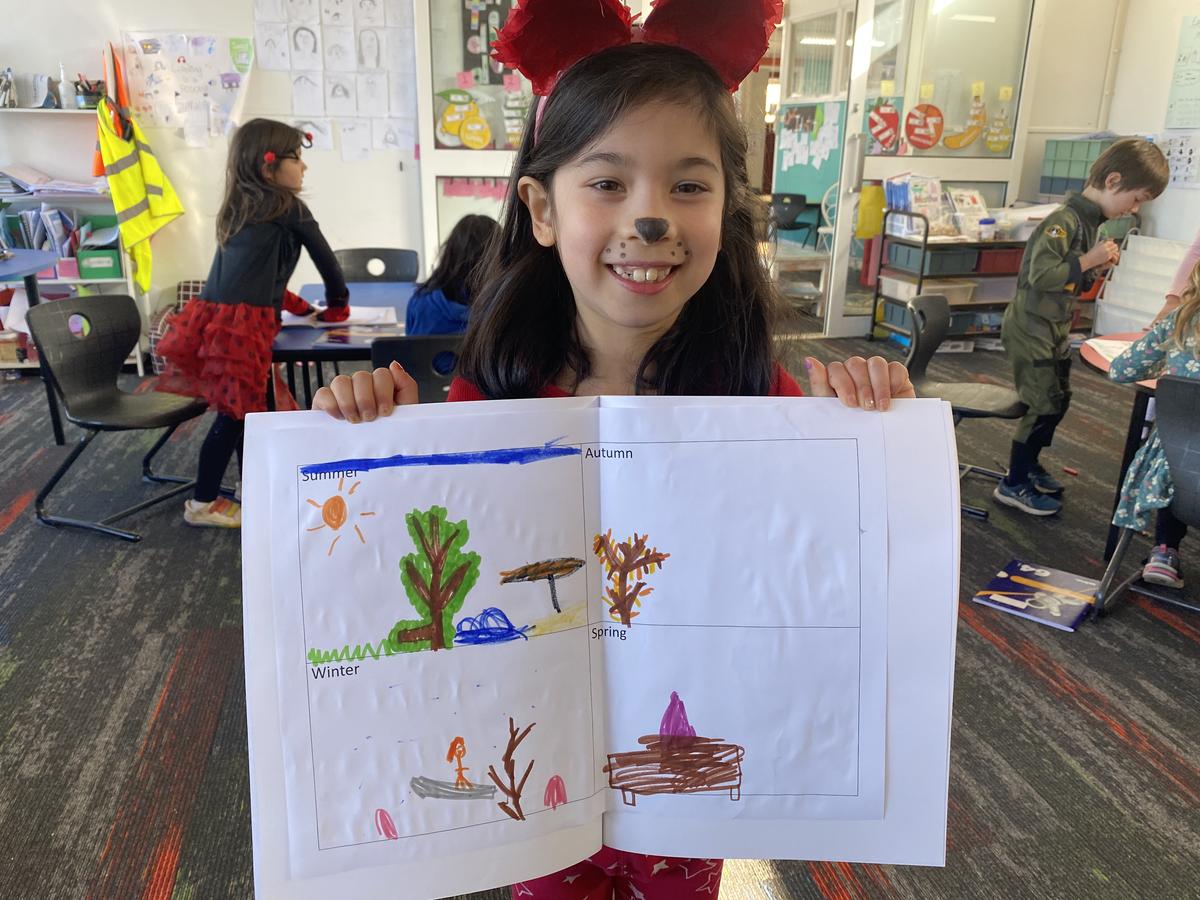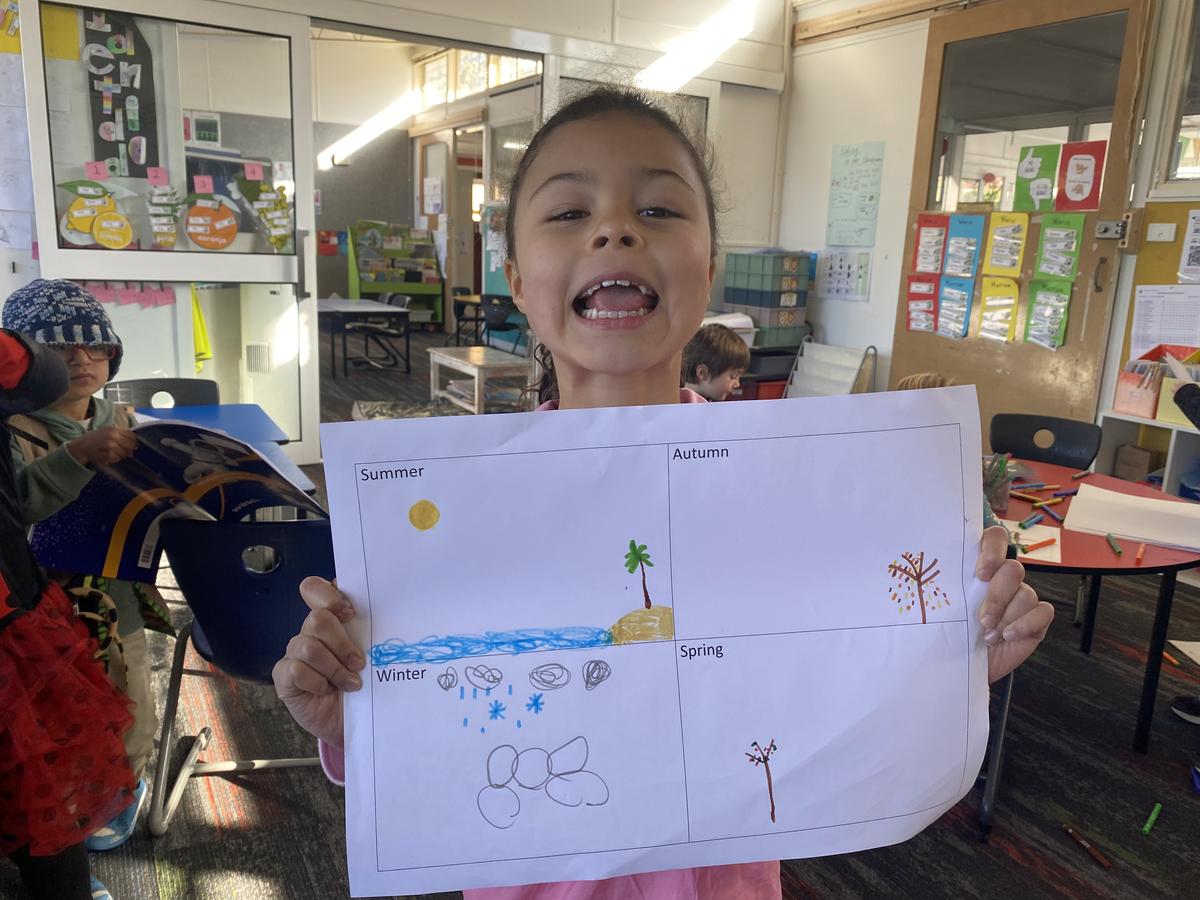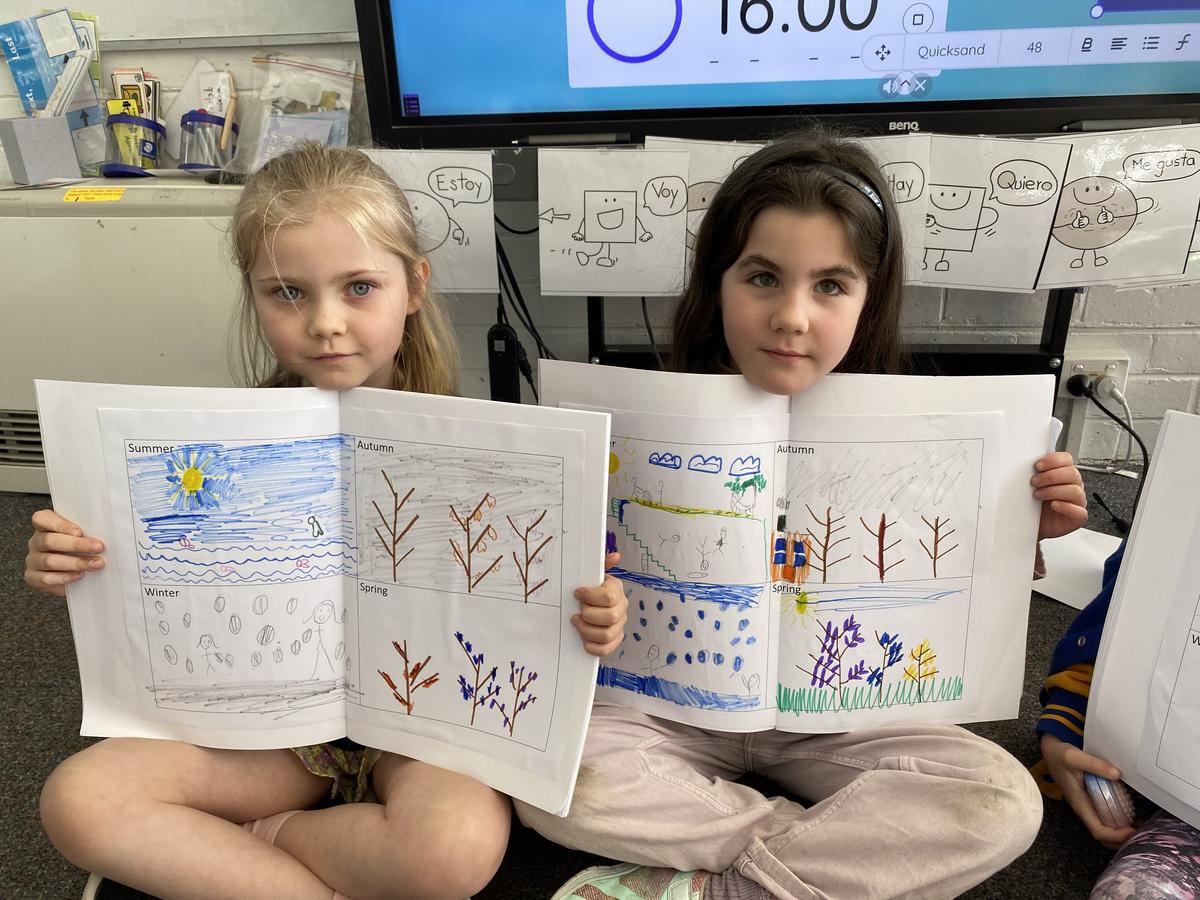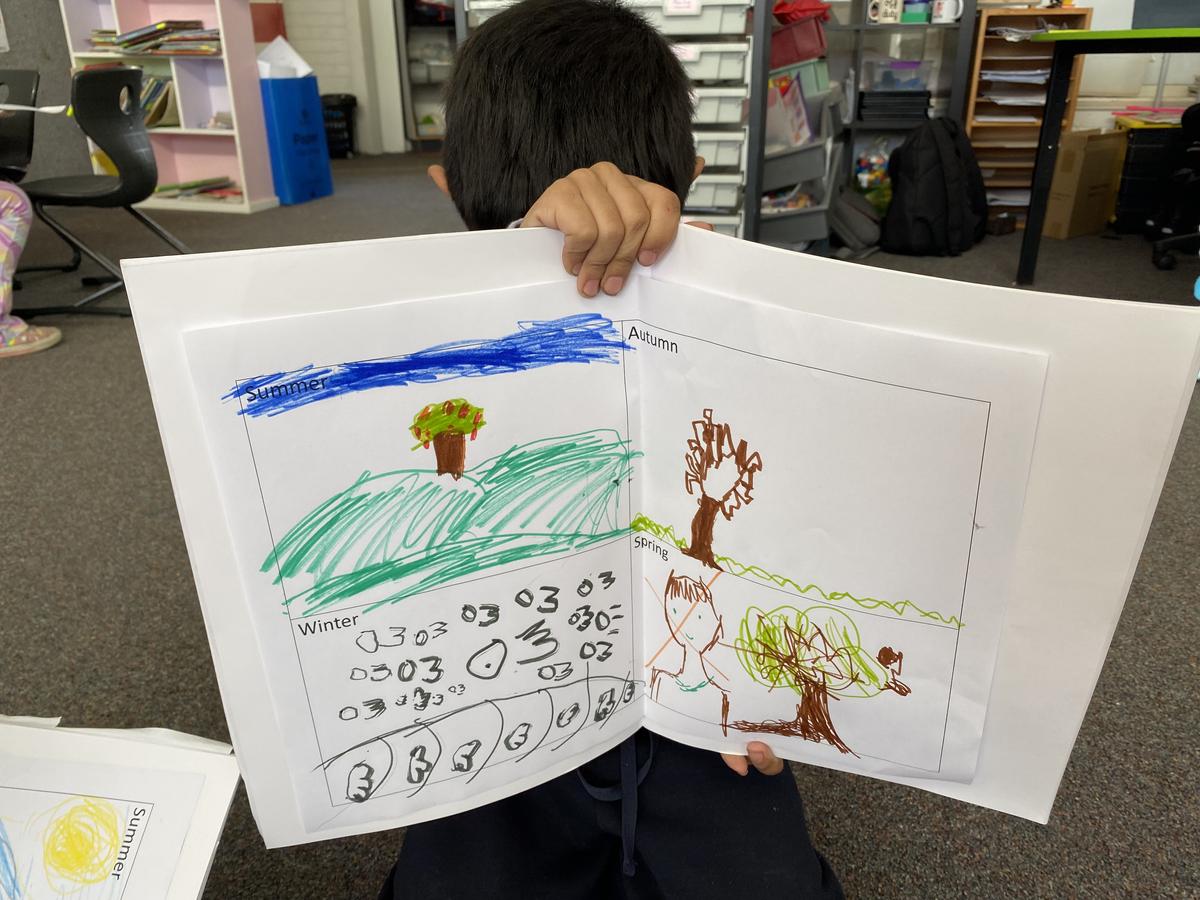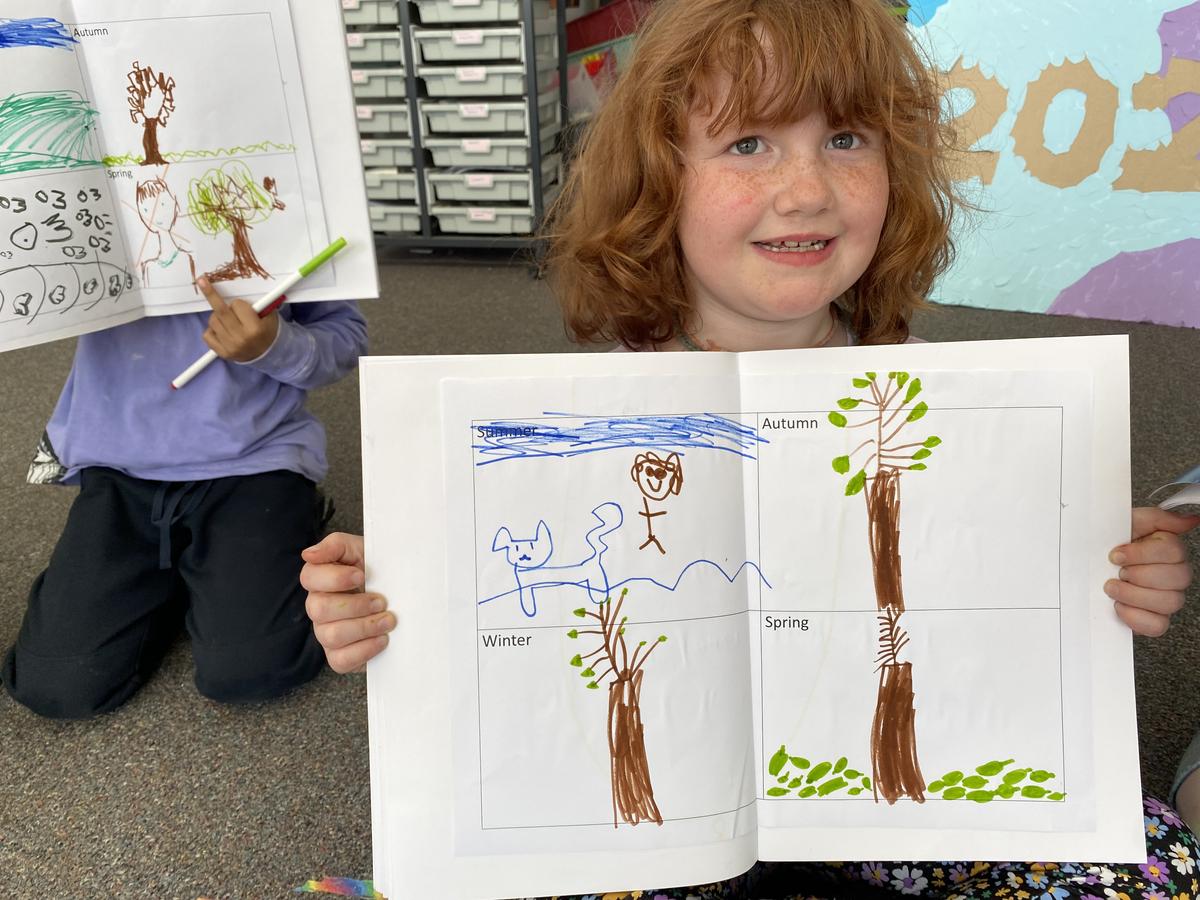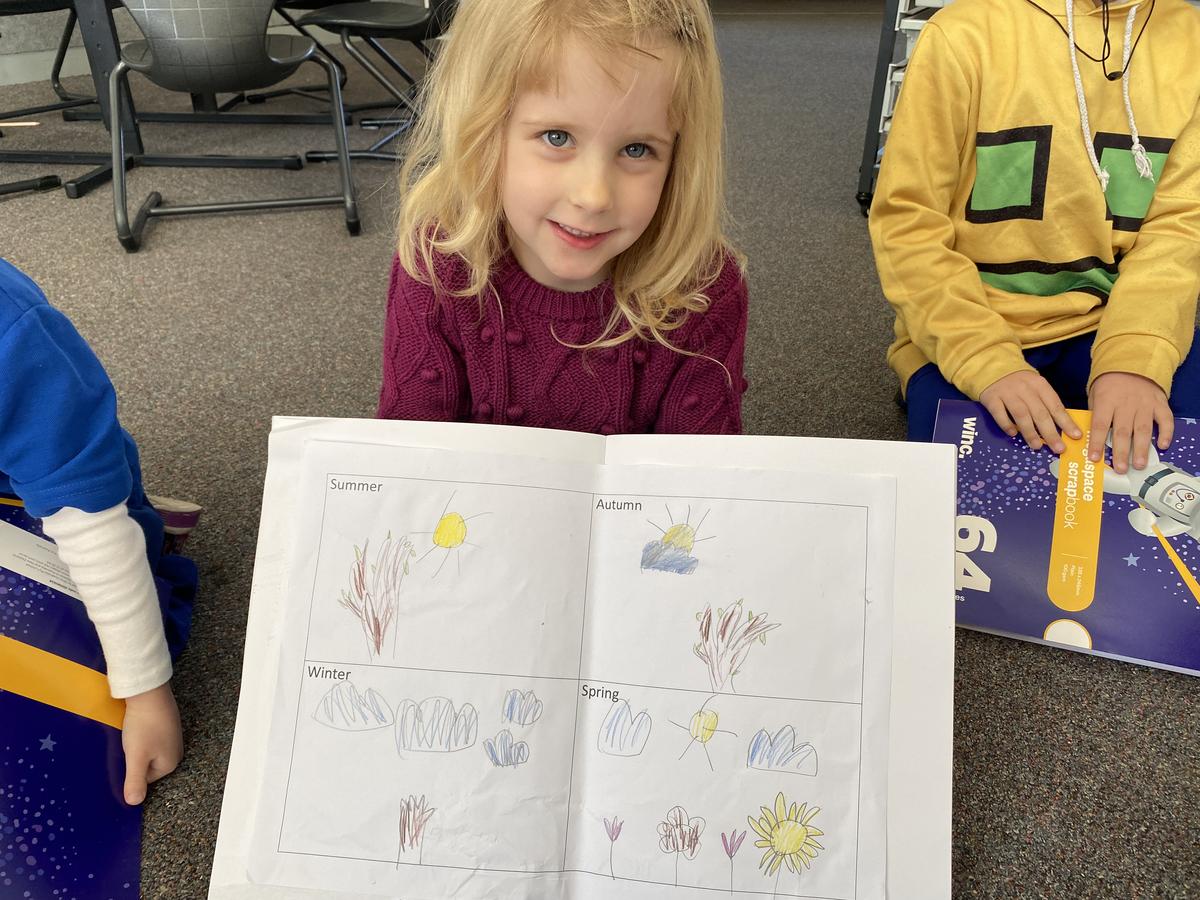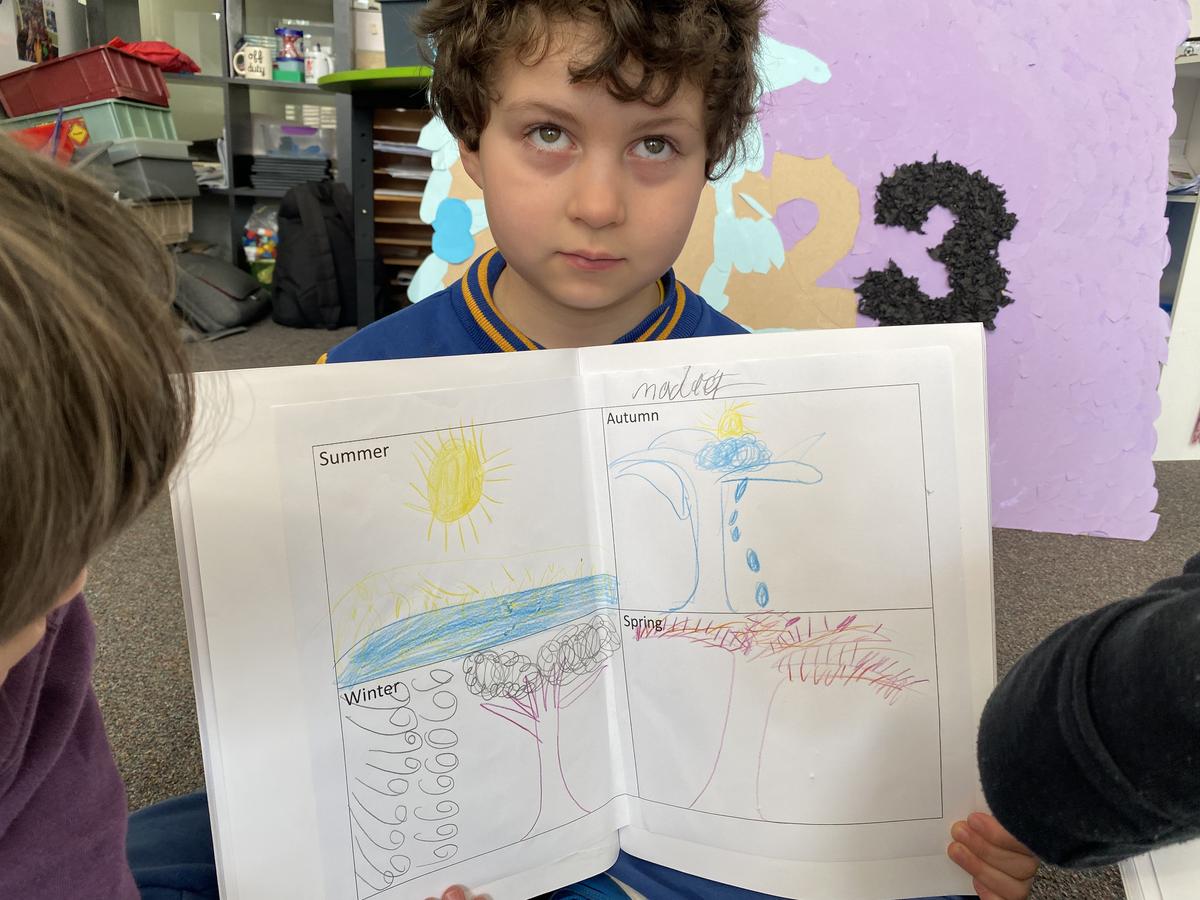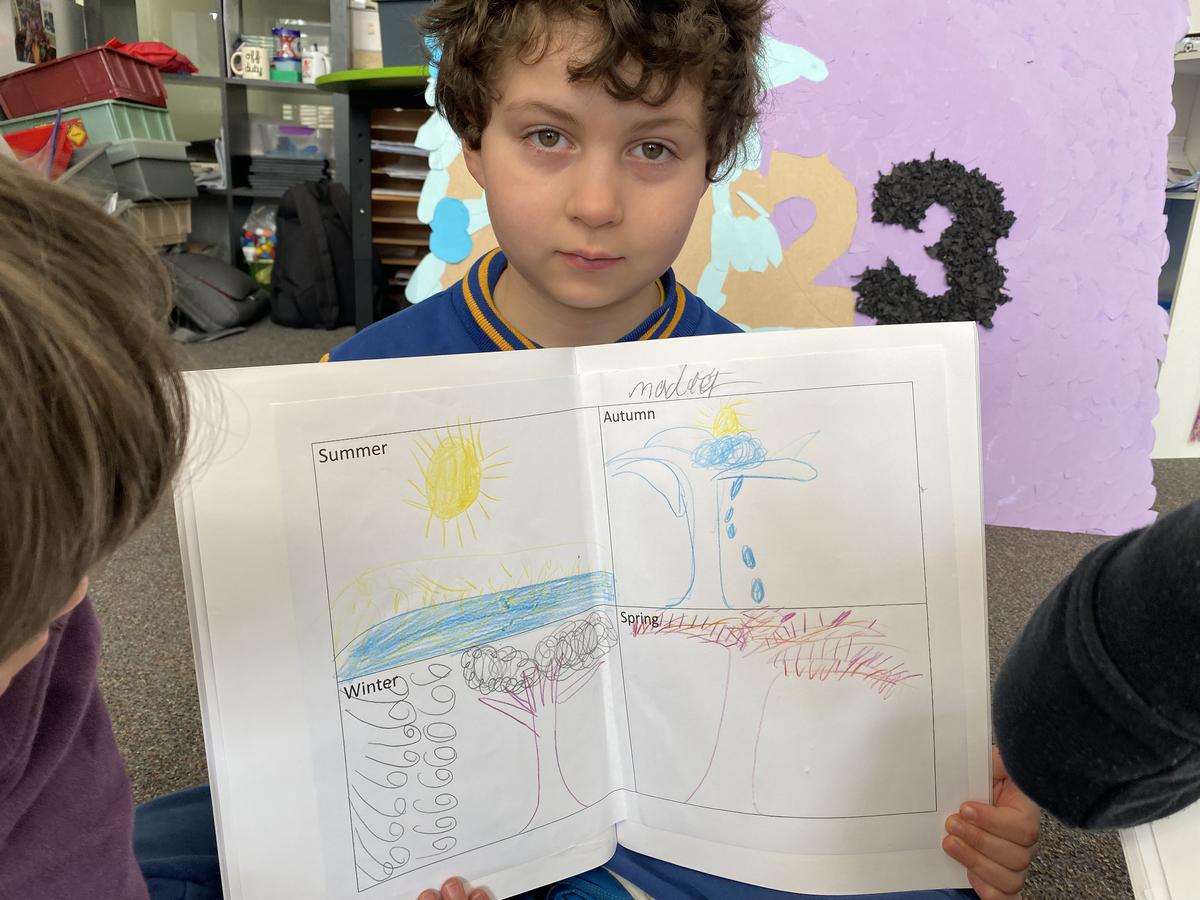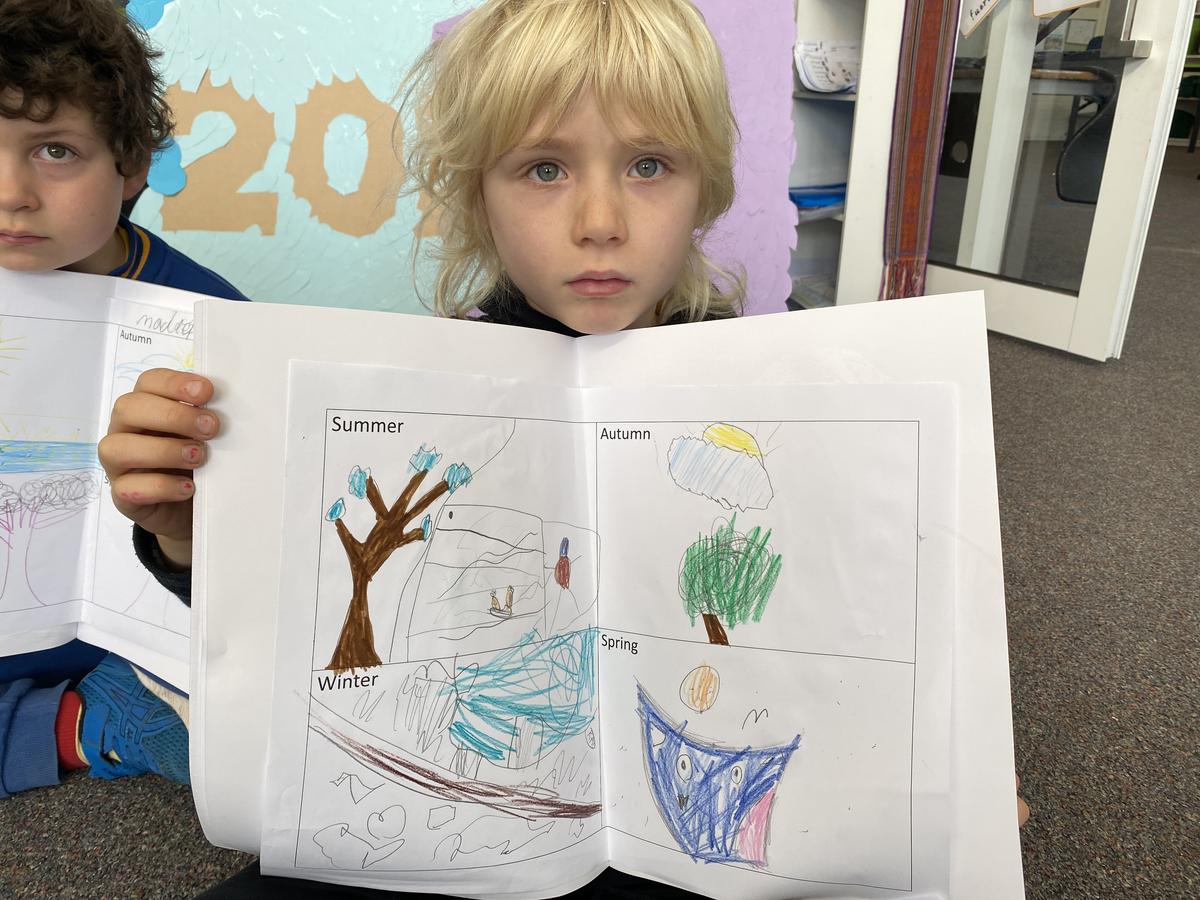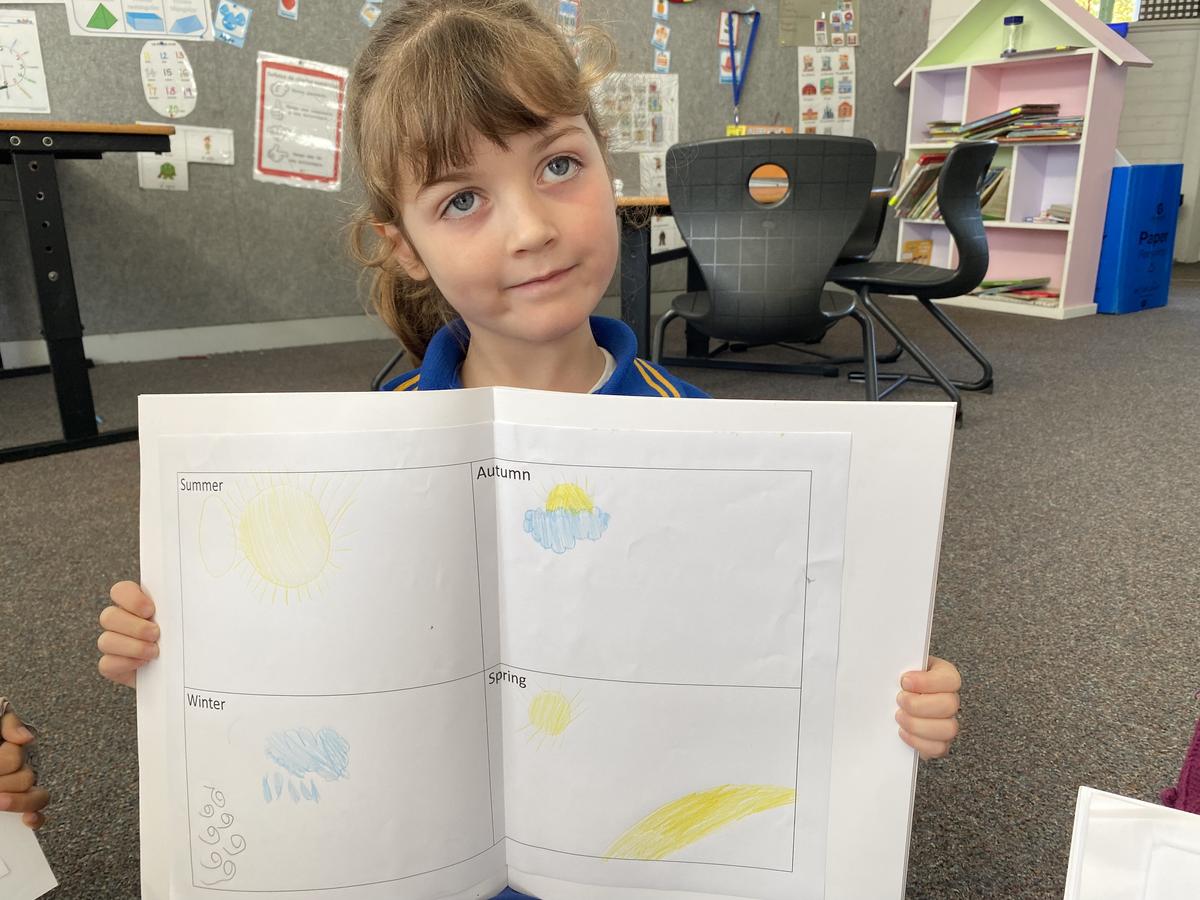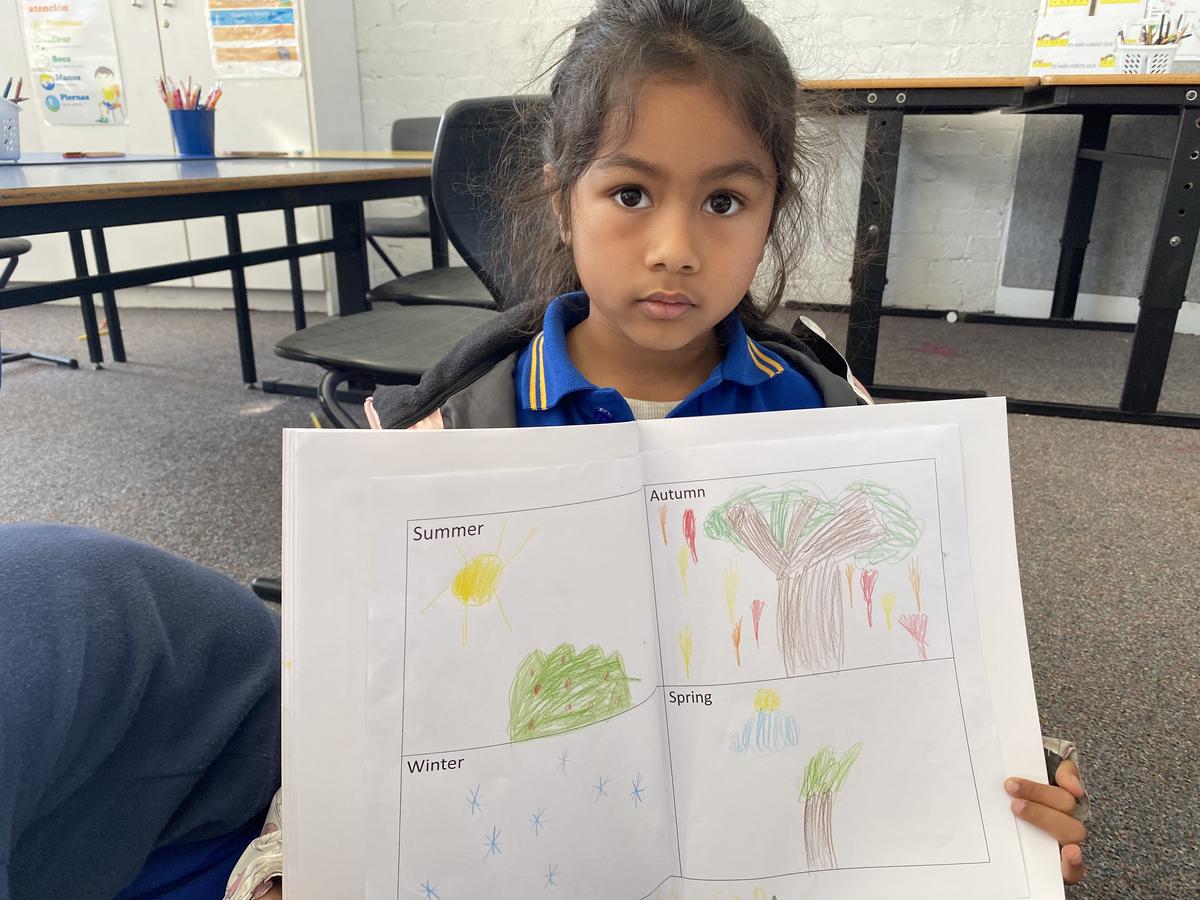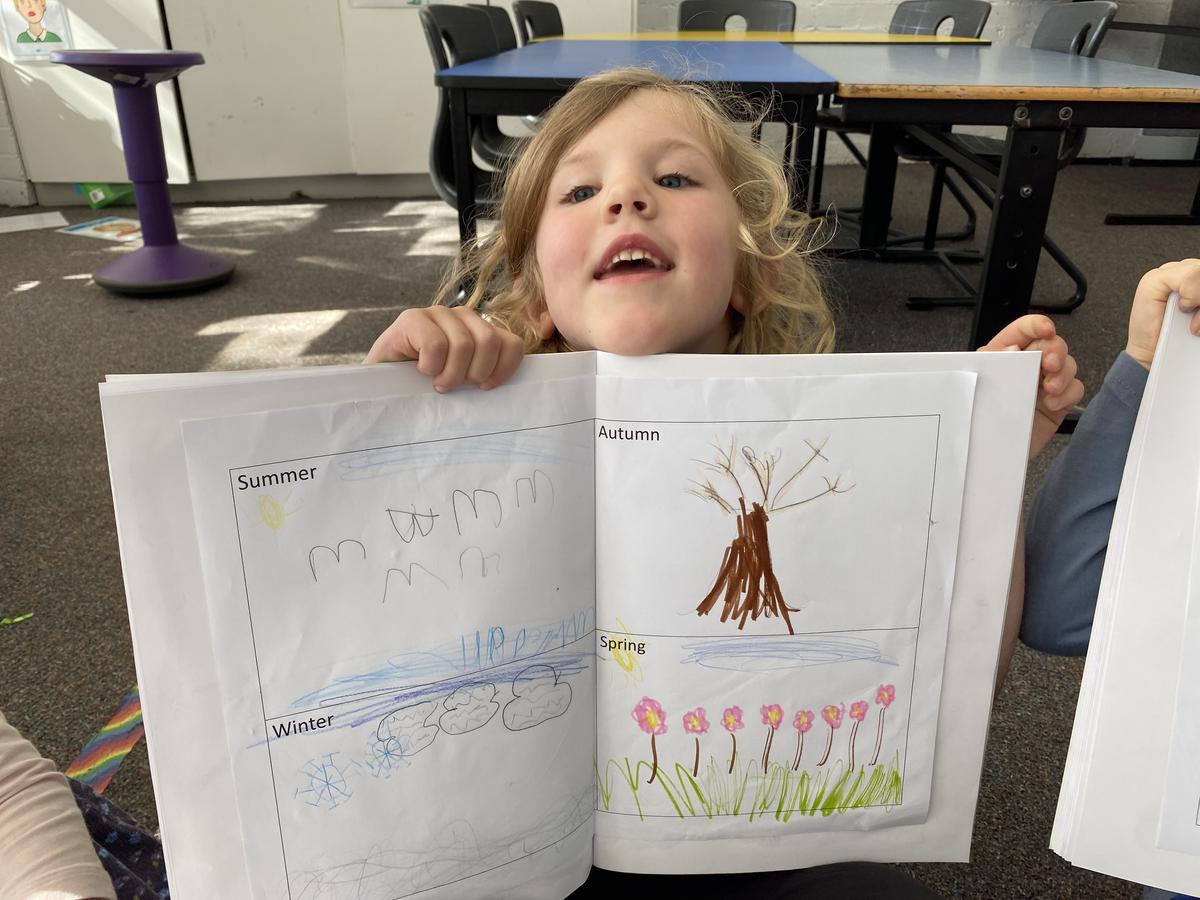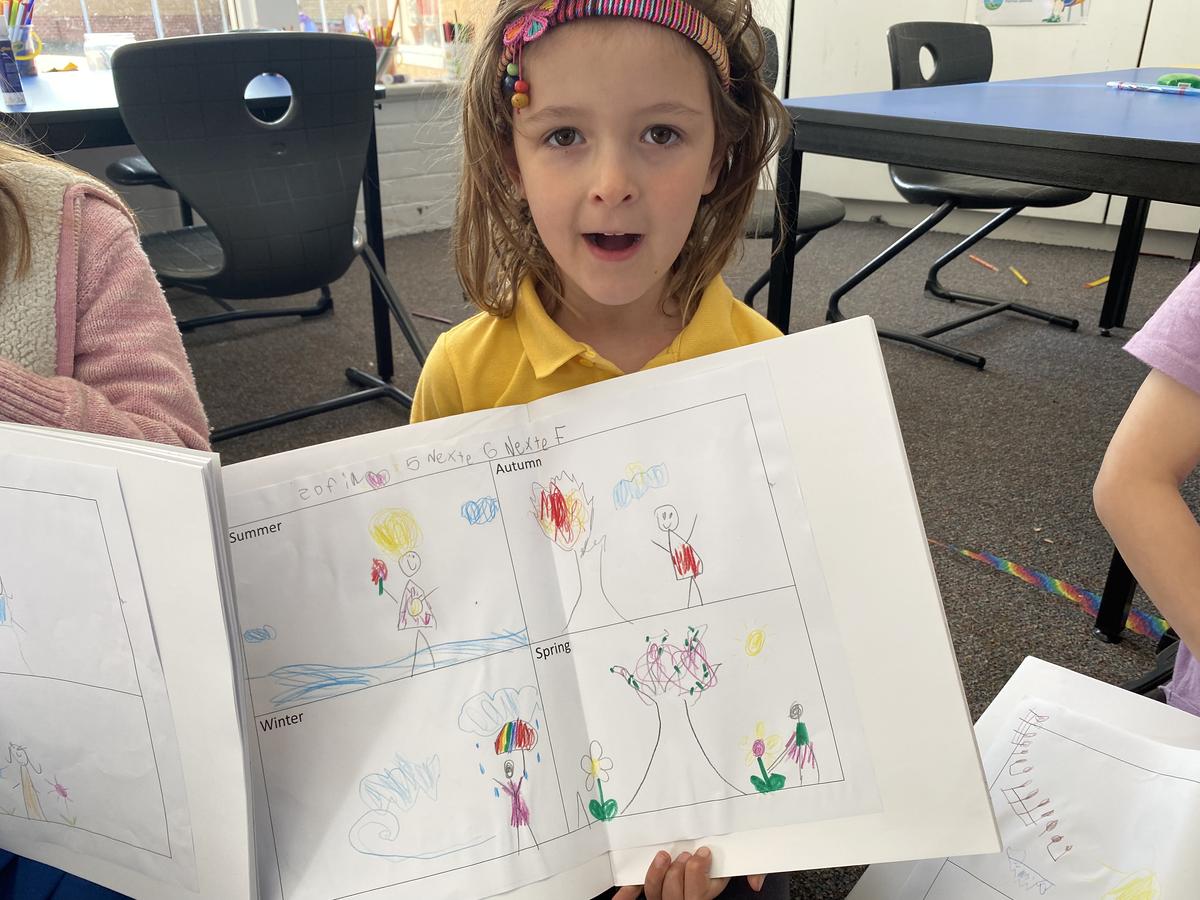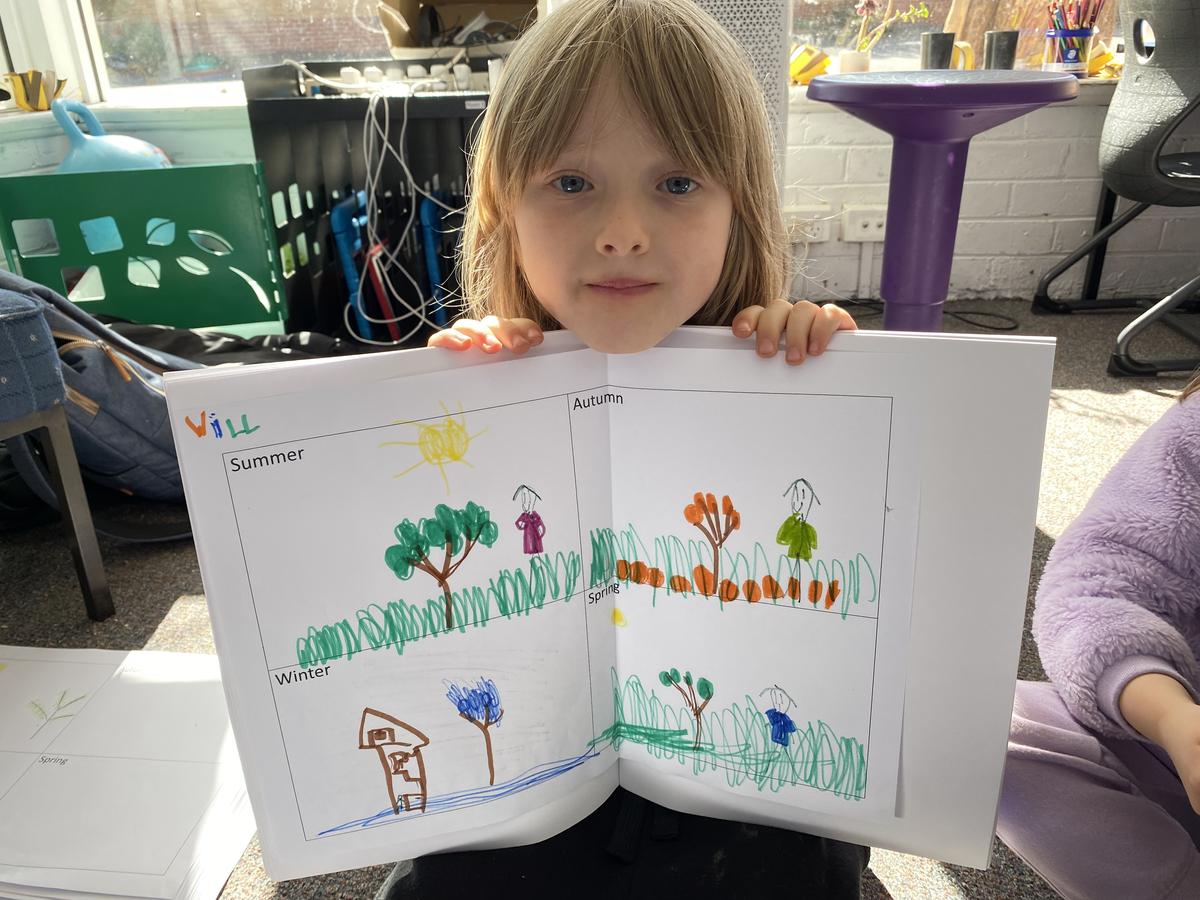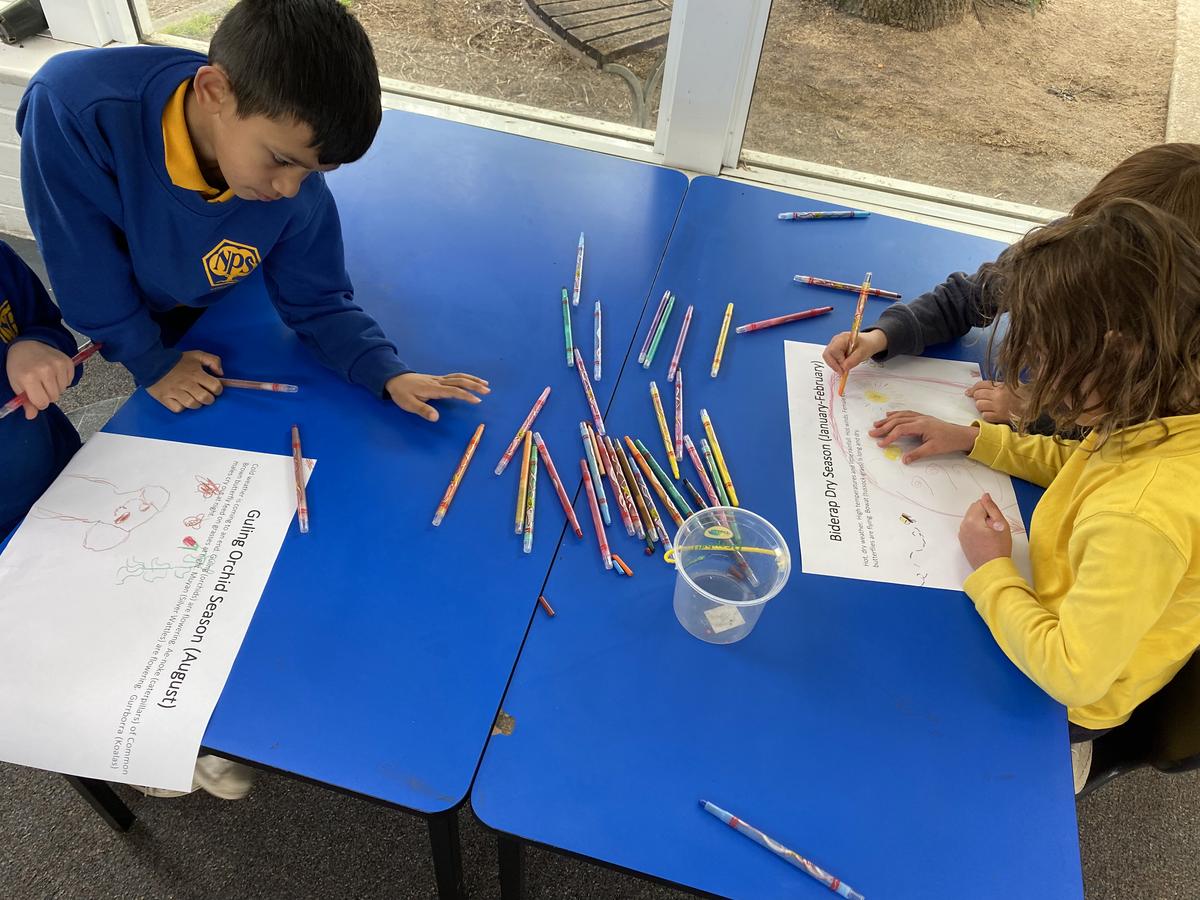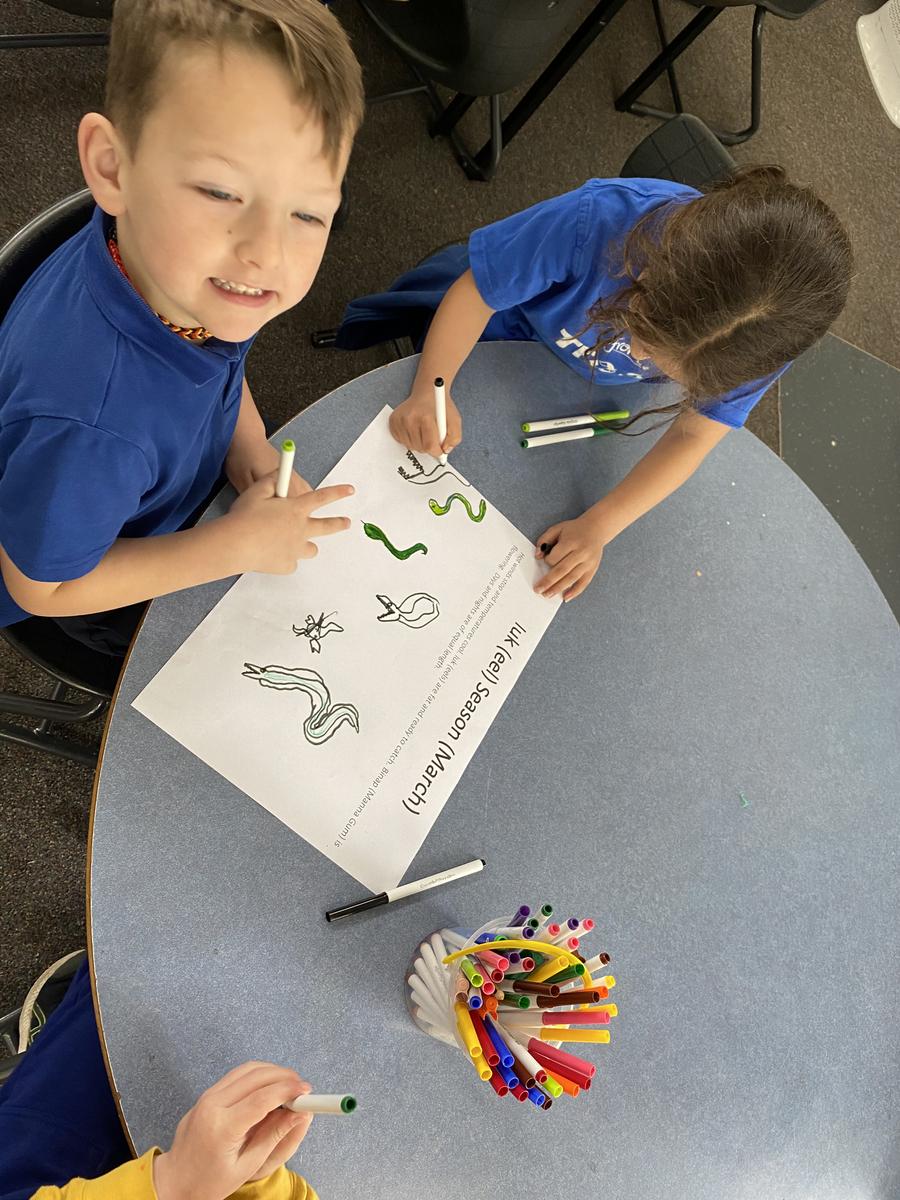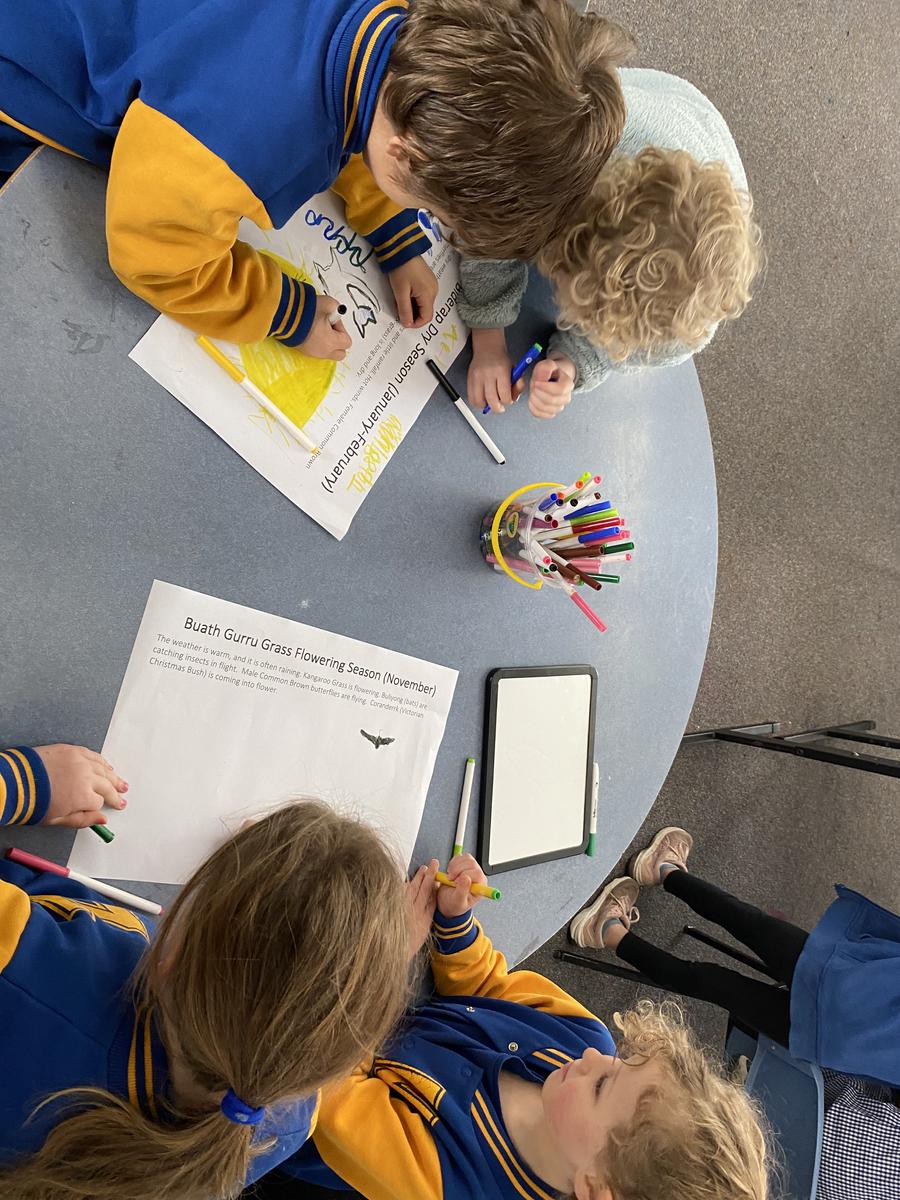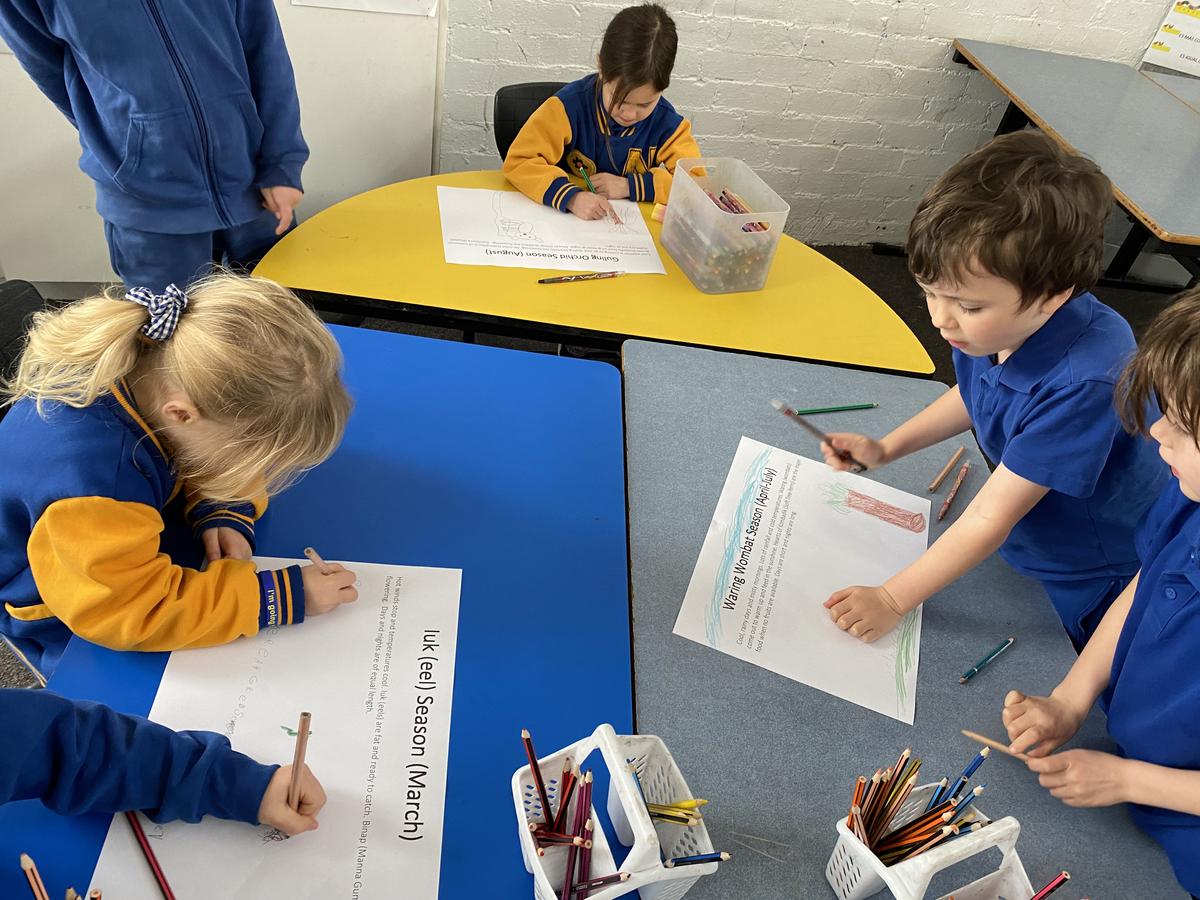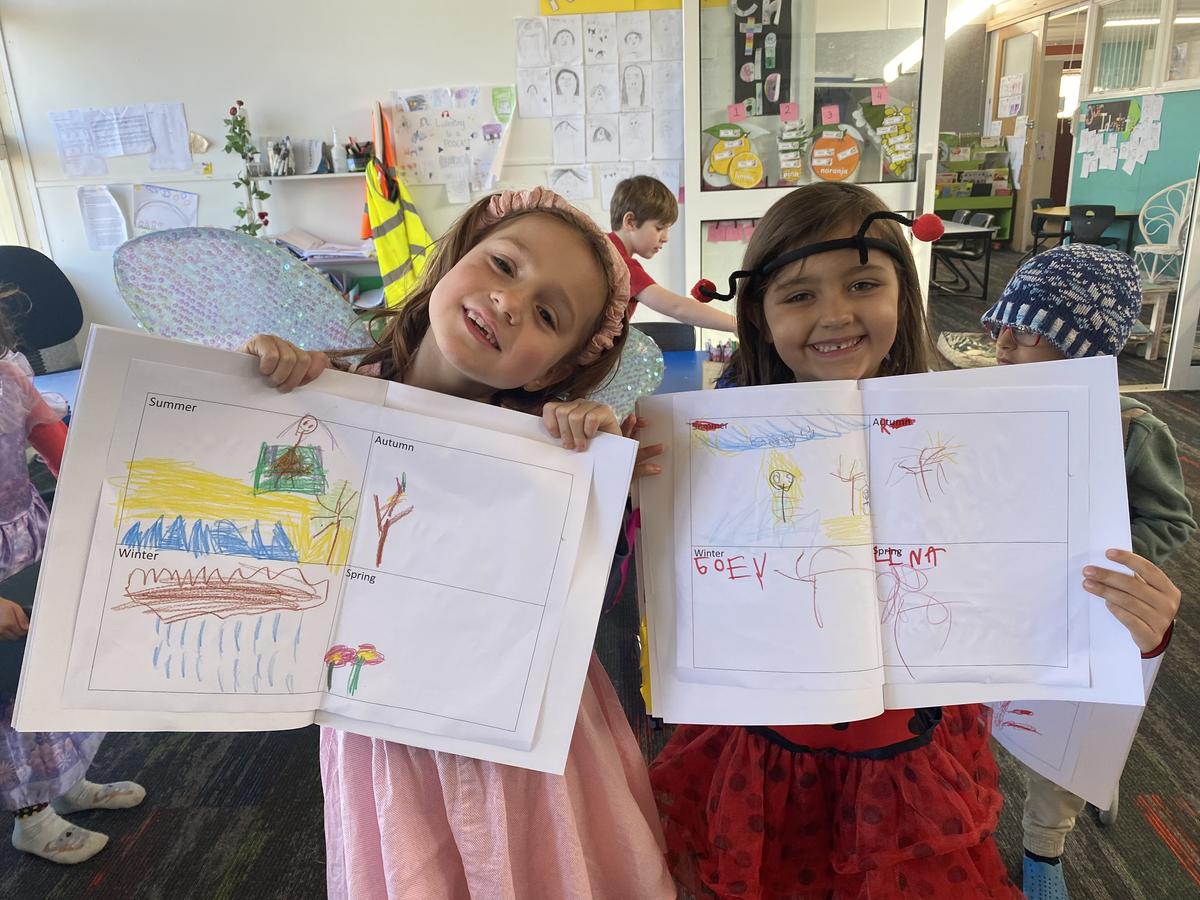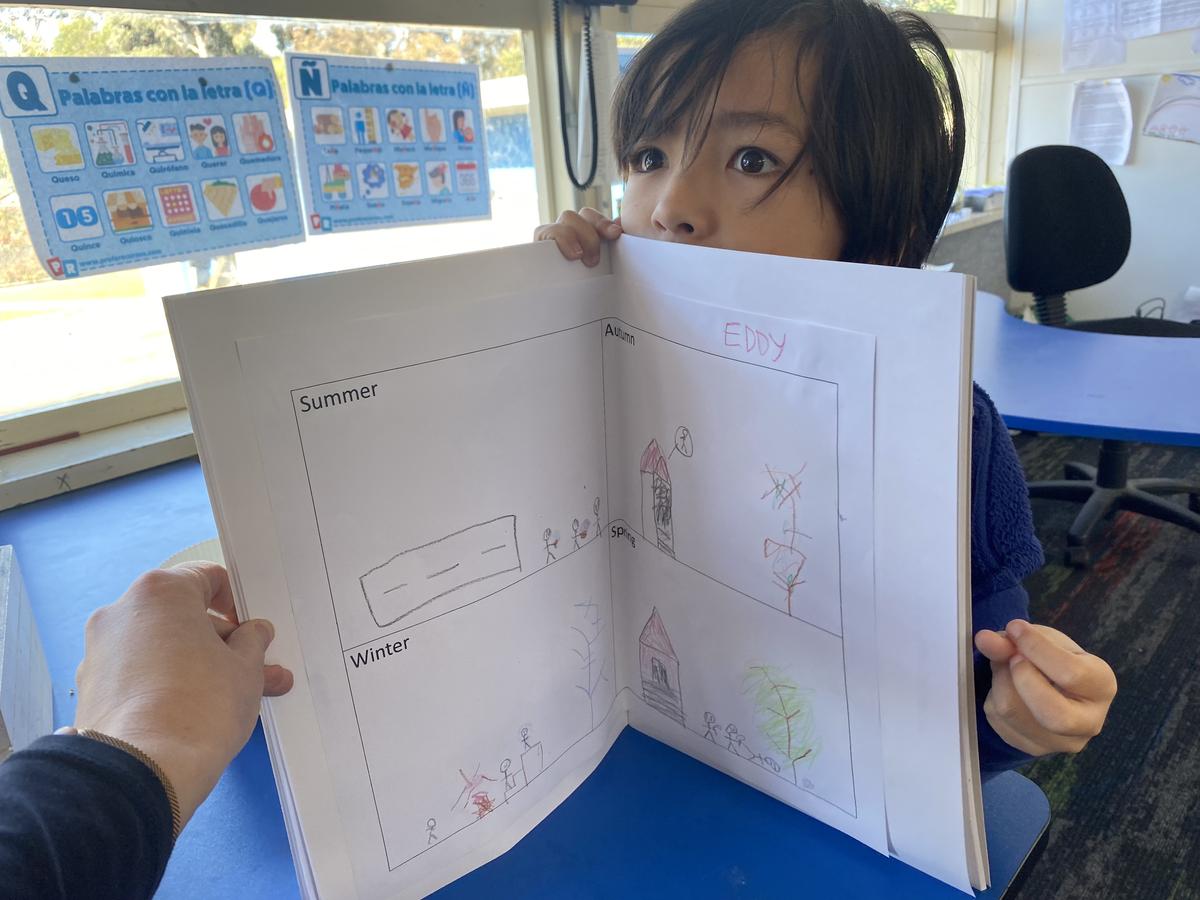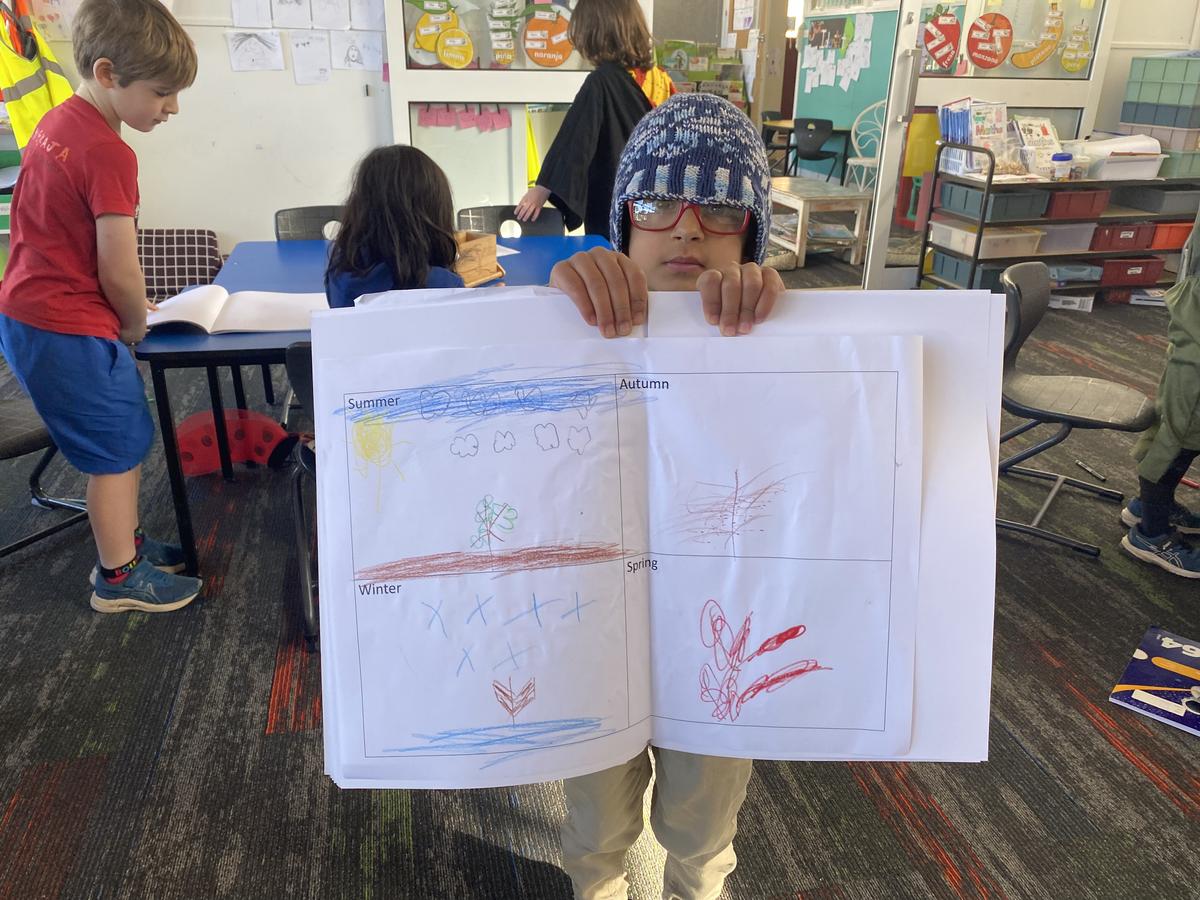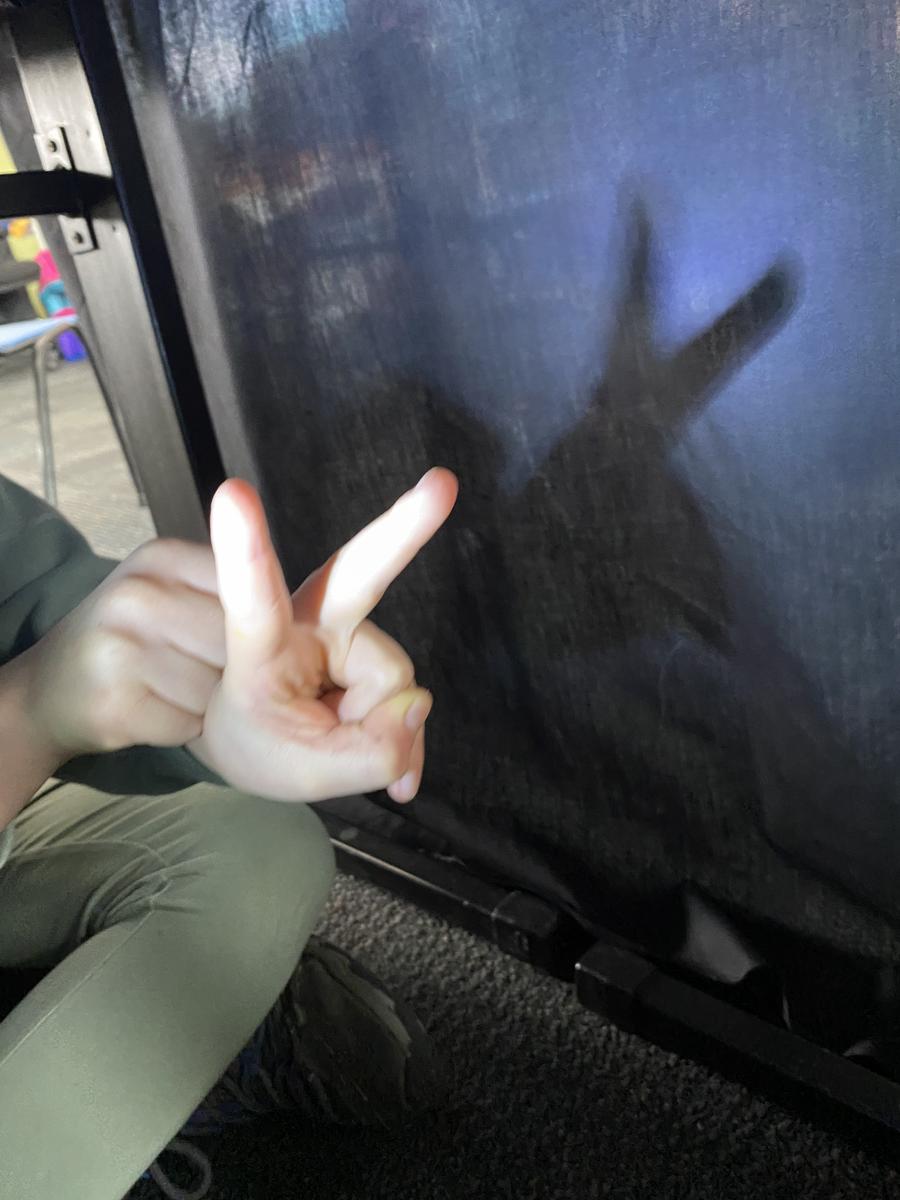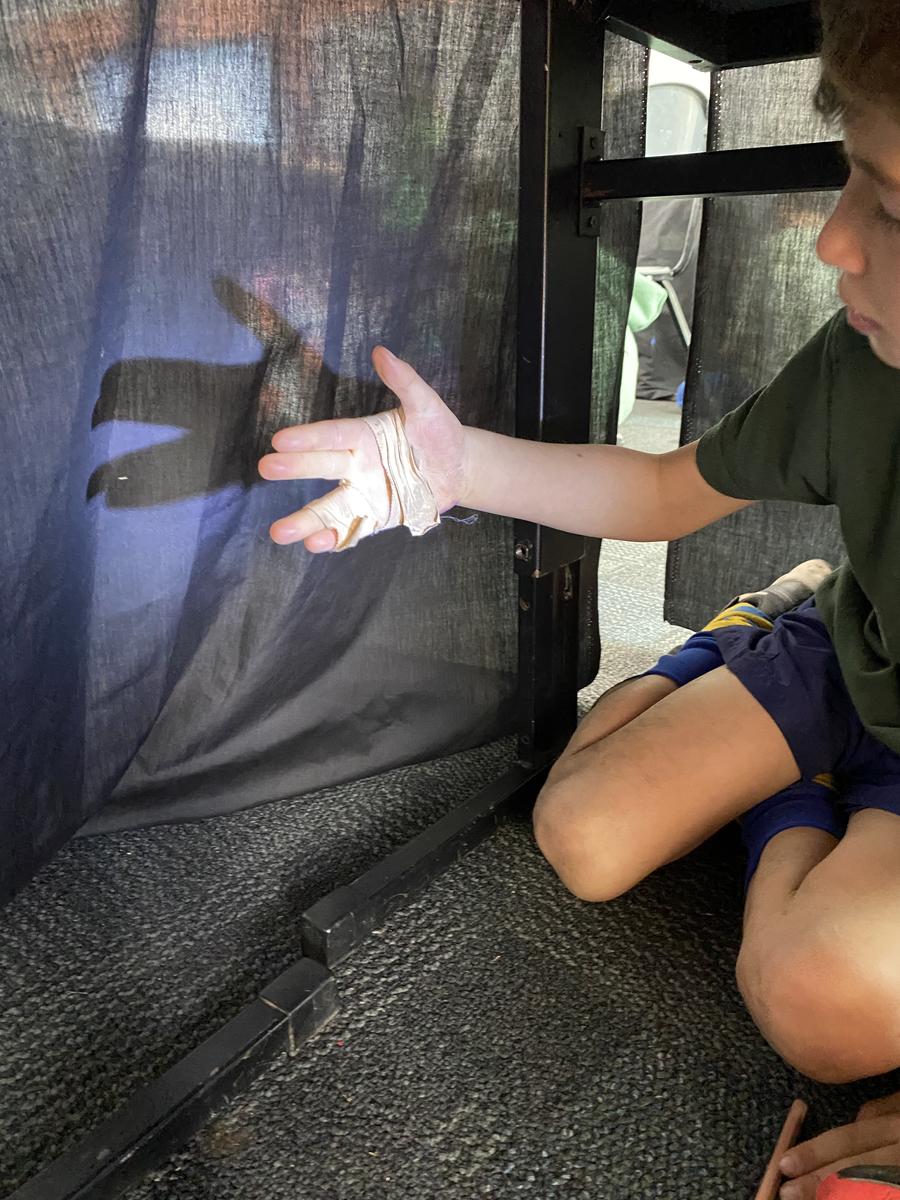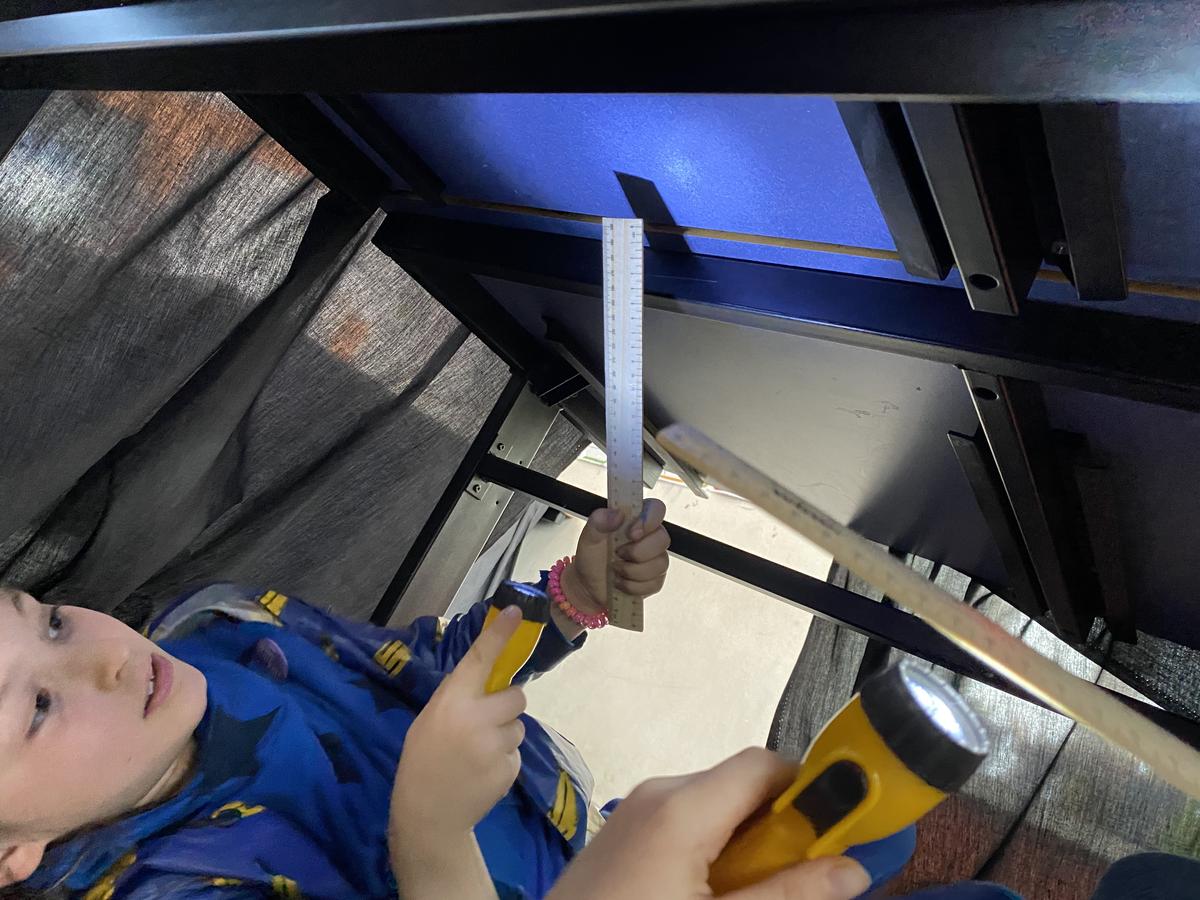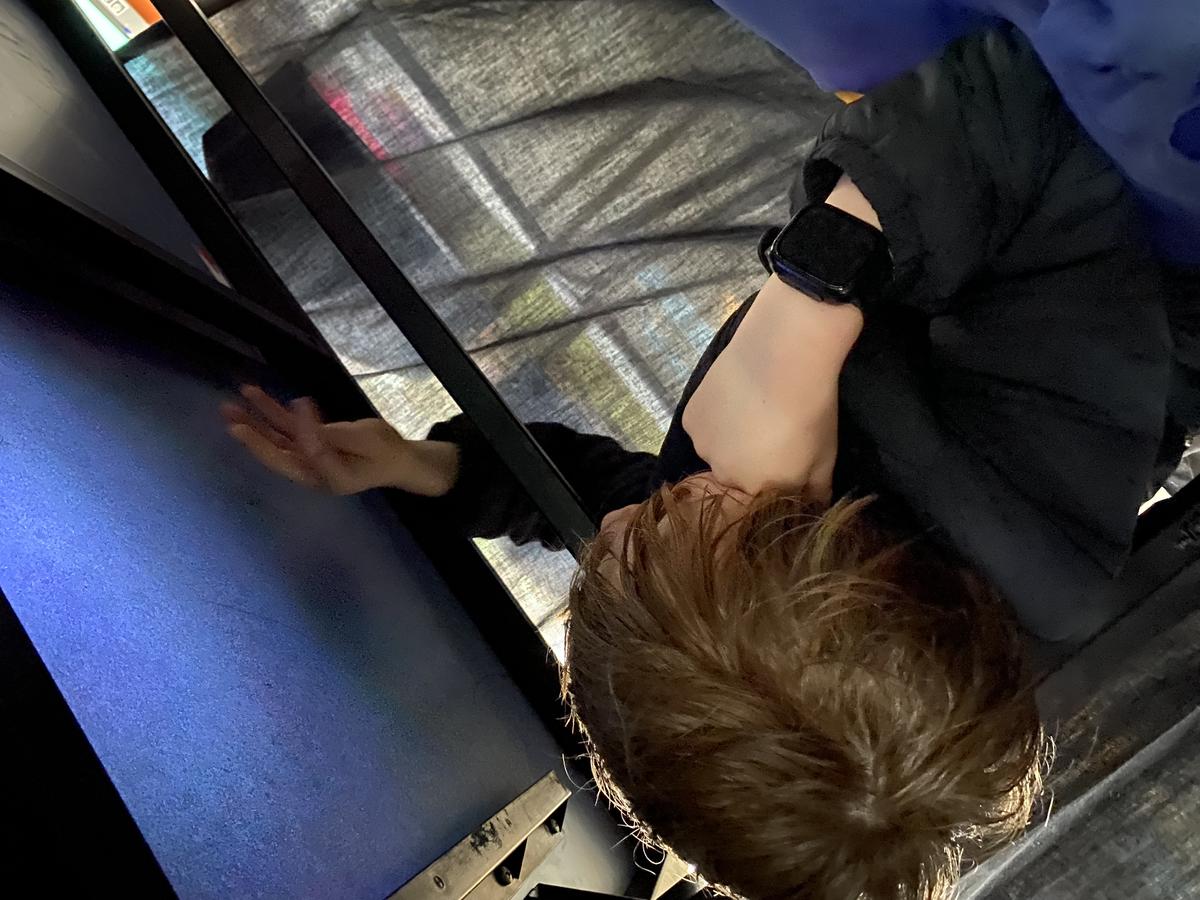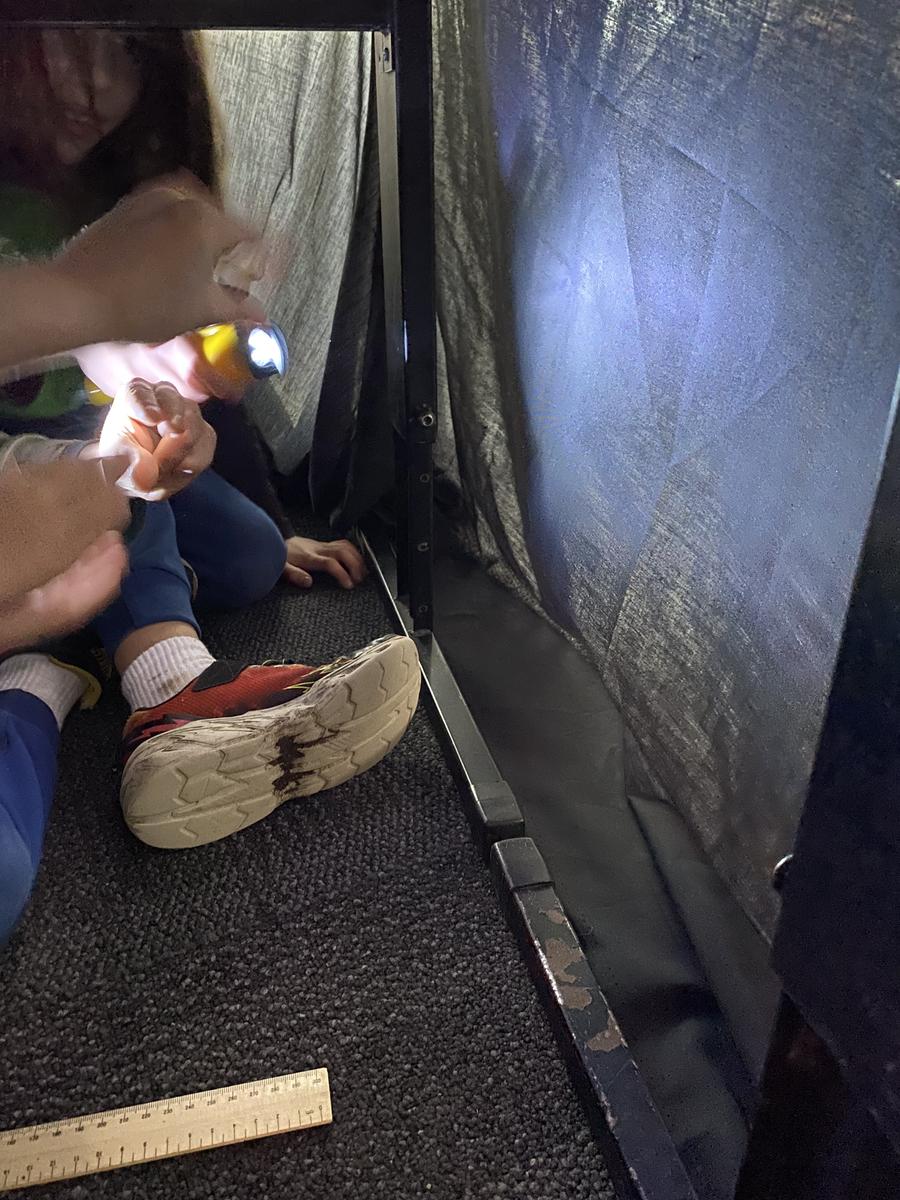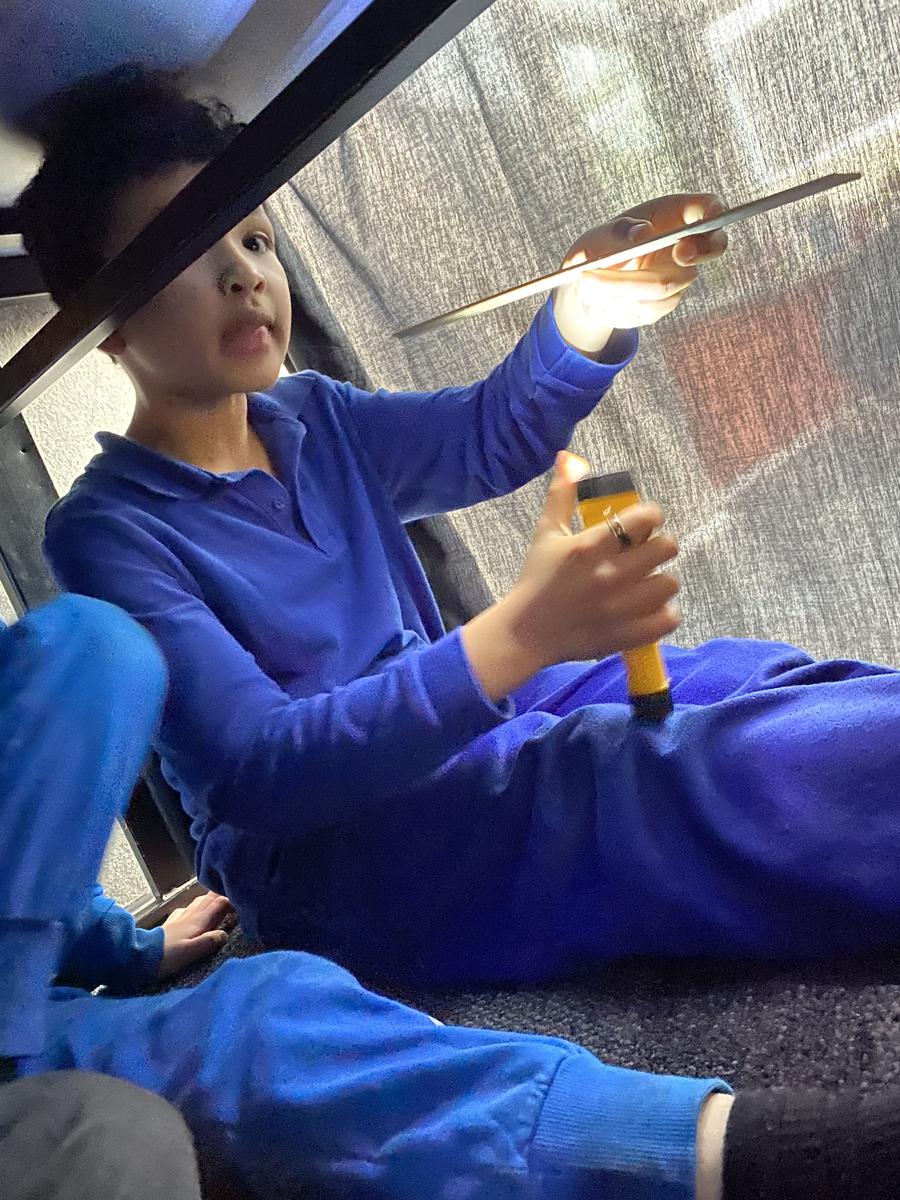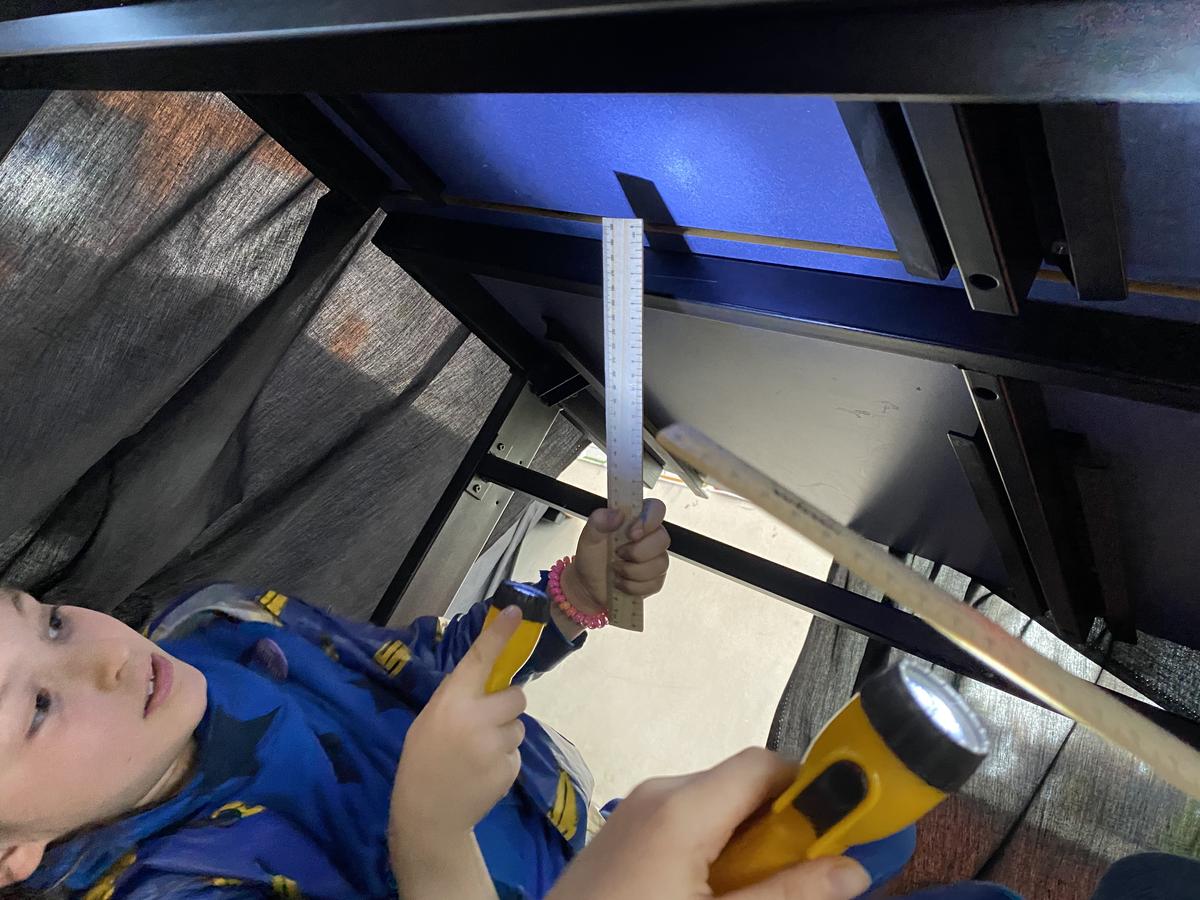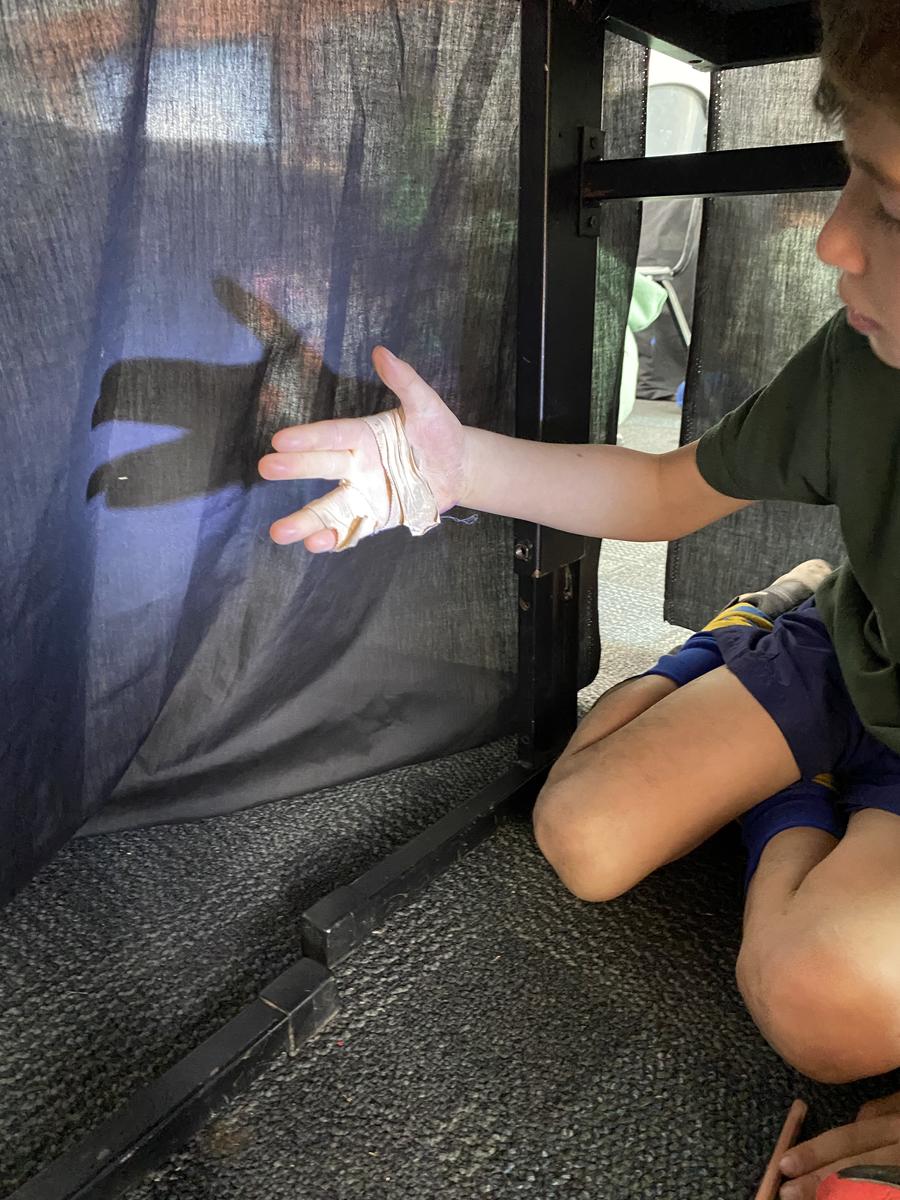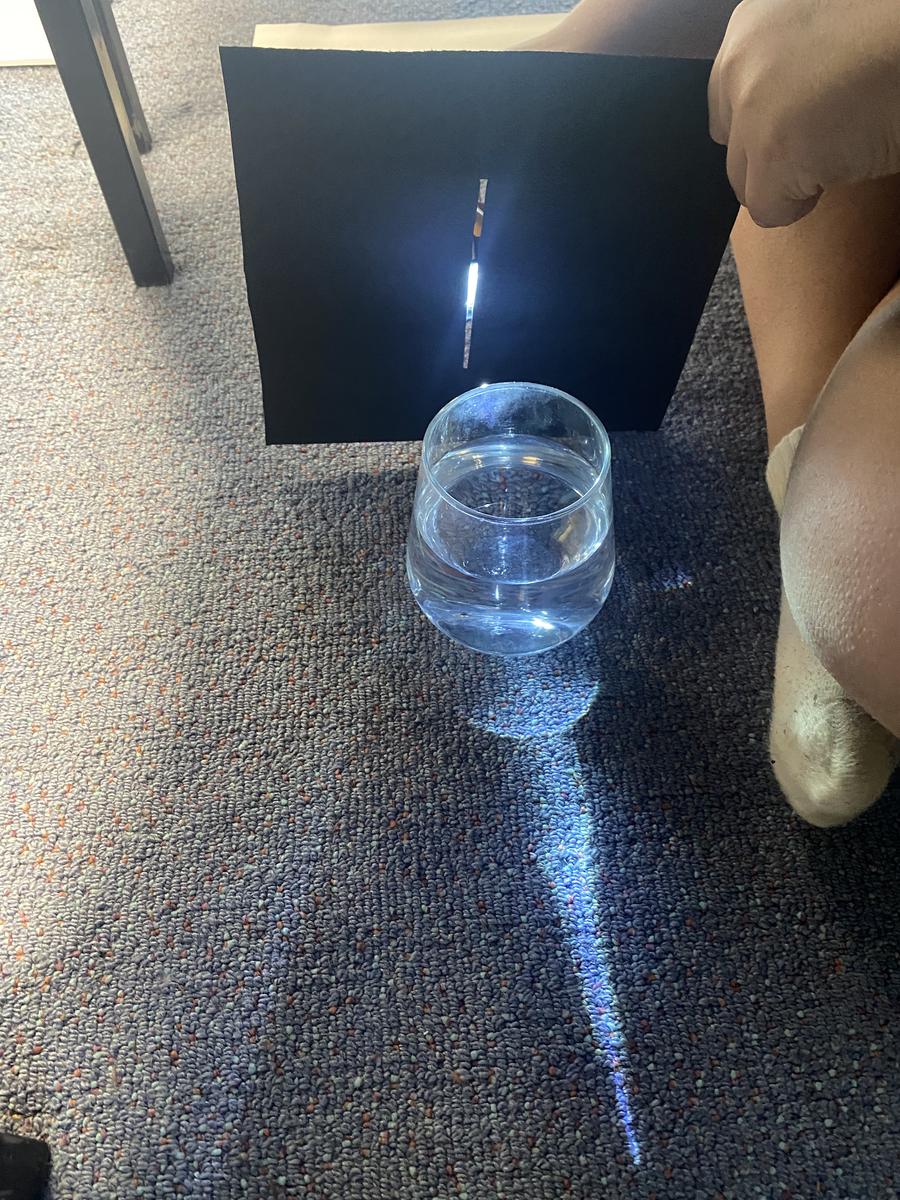STEAM

F/1
We continue to look at the changes within our environment. Students viewed time lapse videos of day turning into night. They were able to identify changes in the amount of light as well what we see in the sky. Students were intrigued to see more subtle changes such as flowers opening and closing with the day/night cycle.
We also looked at the slower changes that happen with the seasons. Students used their prior knowledge to share what they knew about summer, autumn, winter and spring. They identified how the weather and the environment change with the seasons and how this affects the things that we do. Lots of swimming in summer and hot chocolates during winter. We then compared this to the 7 seasons of the Kulin nations. Students learned how aboriginal people used observational skills to identify seasons that more accurately reflect what happens within our local environment. They produced a class book about these seasons to add to their classroom libraries. I hope you all enjoy the warmer weather that the new Poorneet (tadpole) season brings from today.
2/3
Students have begun exploring ideas of how day and night occur. We tuned into the concept by answering the question "Why is it dark at night time?" Students debated whether answers such as "Because we need to sleep" and "Because the sun goes far away from the Earth" were true or false. This generated respectful debates and encouraged students to justify their ideas.
Students then had fun exploring shadows. After making their own hand shadow puppets, they drew diagrams to explain how shadows were formed - by an object blocking the light from reaching a surface. They also identified that the shadow can change size when the light moves, and that the back side of an object illuminated by light is in fact dark.
Bringing these two ideas together, students used torches and balls to model the movement of the sun and the Earth. They learned that it is the rotation of the Earth rather than the movement of the Sun that creates the day and night cycle, and that when the Earth is on the "back side" of the sun, it is dark and in night.
4/5/6
Students finished investigating light from a scientific perspective by exploring refraction. They were able to see that when light is shone through an empty glass, it makes a pattern very similar to the one that you would expect to see if the glass was not there - in straight, outward lines. But when the glass is filled with water, the light that shone through changed direction to move together to form a thin line. With a quick look at prisms, a number of students gained a new found appreciation of Pink Floyd's "Dark Side of the Moon" album cover.
Students are now viewing light through an artistic lens. They have started designing light art projects. Students have been able to choice any aspect of light they have learned about including refraction, reflection, illumination, shadows and transparency to express themselves artistically. We are looking forward to showing you the results in our upcoming art show.
